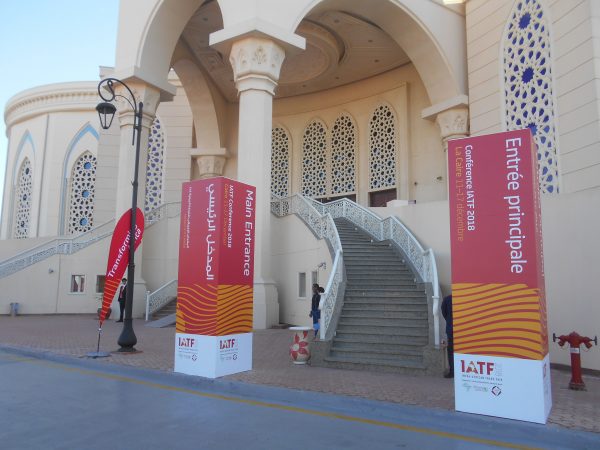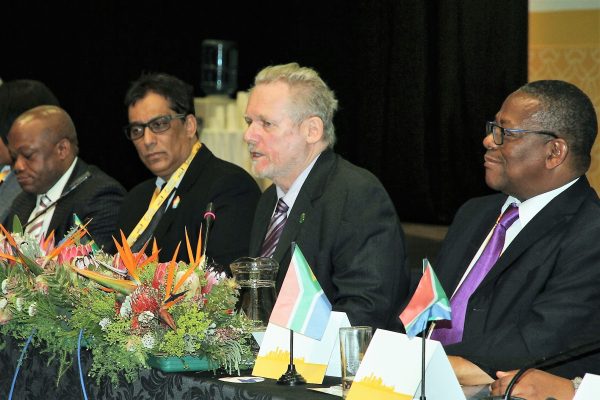

Follow us on:  
|

South African Trade Minister Rob Davies punts Intra-Africa Trade

Cairo, Egypt hosted the first-ever Intra-African Trade Fair (IATF) from December 11 to 17, 2018 [PREUSS]
In an exclusive interview with The BRICS Post, Davies noted that the rest of Africa is already South Africa’s second most important trading region after Asia, but he wanted Africa to be the most important in a mutually beneficial way as the continent industrialises on the back of this expanded single market.
“The reason I am here in Cairo and then moving to London, is to promote trade and industry. I had a successful meeting at Sharm El-Sheik at the Africa Forum, and here we had engagements with my fellow African trade ministers on technical issues such as rules of origin. In London I will be once again be promoting our Business Process Outsourcing credentials,” Davies said.
For several years now South African businesses such as MTN, Vodacom, Shoprite and Pick n Pay have targeted the rest of Africa as a growth opportunity, as South Africa has grown so slowly since the 2008 Global Financial Crisis.
Cairo hosted the inaugural Intra-African Trade Fair (IATF) from December 11 to 17. More than forty South African business delegations participated in the IATF.
Davies said the Forum and IATF provided an opportunity for South African executives to network with their peers and to explore mutually beneficial partnerships.
“The IATF will provide a platform to promote trade, investment, exchange of market information and opportunities among countries in the continent. Furthermore, this platform has been set up as one that will facilitate the speedy conclusion of business deals between buyers and sellers as well as investors,” Davies said.
“South African companies can utilise the platform for business to business exchanges and development of business opportunities as well as an opportunity to create linkages between South Africa and countries in the rest of the continent. In addition, these companies will be able to leverage from Afreximbank and other financial institutions that will share information about their trade finance and trade facilitation interventions that will support intra-African trade,” he added.
Davies noted that IATF was an excellent opportunity to position South Africa to grow the export volumes especially into the rest of the continent and to promote the export of goods and services; as well as exposing South African buyers to what the rest of the continent has to offer.

Davies said: “The IATF will provide a platform to promote trade, investment, exchange of market information and opportunities among countries in the continent.” [Photo courtesy: DTI]
“It has taken more than 50 years since the founding of the Organisation of African Unity in 1963 to get to a continental free trade agreement. Our next step is to create a seamless continental payments system and then with time we can look at a common currency,” Davies said.
In 2016, three of South Africa’s neighbours were in the Top Ten export destinations with Namibia at fourth position, Botswana fifth and Mozambique tenth. The hope is that soon Zimbabwe could be added to this list as it was in the 1990s.
The United Nations Economic Commission for Africa estimated that full implementation of the AfCFTA could increase intra-African trade by 52 per cent by 2022, compared with trade levels in 2010.
The AfCFTA aims to remove barriers to trade such as tariffs and import quotas, in order to allow the free flow of goods and services, which should reduce prices for consumers and allow factories to exploit the benefits of scale and increased capacity utilisation.
Helmo Preuss in Cairo, Egypt covering the IATF for The BRICS Post